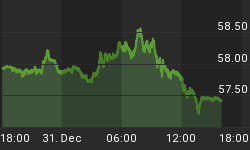Stocks and mainstream financial markets have lately come under selling pressure after it emerged that the Federal Reserve will likely raise interest rates sooner and more frequently than earlier anticipated. After enjoying a banner year in 2021, the S&P 500 is down 2.2% in what is shaping up as another slow year for the U.S. stock market.
But banking and financial investors could not be happier, with broad spectrum financial exchange traded funds seeing huge capital inflows thanks to the U.S. 10-Year yield approaching a one-year high of 1.8%.
According to the latest Refinitiv Lipper fund flow report, investors retracted $21.1B on the week led by money market funds, which lost $29.9B in capital outflows. Taxable bond funds continued to see major outflows with last week’s tab coming in at $1.4B.
On the opposite side of the spectrum, equity funds attracted $9.9B while tax-exempt fixed income funds pulled in $231M for the week.
So far in the new year, exchange traded fund capital flows have gone towards financials, energy, and the semiconductor space, with the Financial Select Sector SPDR ETF (NYSEARCA:XLF), Energy Select Sector SPDR ETF (NYSEARCA:XLE), and the VanEck Vectors Semiconductor ETF (NASDAQ:SMH) attracting the lion’s share of inflows.
XLF leads all ETFs this year after attracting $1.66B in inflows; XLE has taken in $1.29B in 2022 so far while SMH has garnered YTD inflows to the tune of $1.2B.
With $49.1B in assets under management(AUM), XLF is the biggest ETF in the financial sector. The fund exposes market participants to financial stocks involved in insurance, commercial banks, capital markets, real estate investment trusts, consumer finance, and other related areas. The fund has 69 holdings led by Berkshire Hathaway Inc. (NYSE:BRK.B). BRK.B is up 8.4% in 2022.
XLF is also home to famous Wall Street banks JPMorgan Chase & Co (NYSE:JPM), Bank of America Corp. (NYSE:BAC), Wells Fargo & Co (NYSE:WFC), Morgan Stanley (NYSE:MS), Goldman Sachs Group Inc. (NYSE:GS) and Citigroup Inc.(NYSE:C), as well as the world’s largest fund manager, Blackrock Inc. (NYSE:BLK).
Other banking ETFs that appear supercharged by rising yields are the Invesco KBW Bank ETF (NASDAQ:KBWB), First Trust Nasdaq Bank ETF (NASDAQ:FTXO), and the SPDR S&P Bank ETF (NYSEARCA:KBE), with the three funds boasting gains of 8.4%, 9.0% and 7.5%, respectively, after the first trading week of the new year.
Financials to Outperform
The financial sector of the economy is one of several segments of the market that tend to benefit from a steepening yield curve, mainly because banks perform better in a situation where longer-term rates are higher than shorter-term rates. This setup allows banking and lending institutions to generate a higher spread on lending loans, which makes up a big part of their revenue base.
Indeed, we can already see this reflected in the latest earnings by Wall Street banks.
JPM has reported Q4 2021 revenue of $29.26B (-3.0% Y/Y), 520M below the consensus but GAAP EPS of $3.33 beat by $0.33.
WFC’s Q4 2021 revenue of $20.86B (+12.8% Y/Y) beat by $2.25B while Q4 GAAP EPS of $1.38 beat by $0.25.
Citigroup has reported Q4 2021 revenue of $17.01B (+1.1% Y/Y), beating by $230M while non-GAAP EPS of $1.99 beat by $0.33.
David Lefkowitz, CIO Americas at UBS Wealth Management, has tapped the financial sector as the third-ranked cyclical sector expected to outperform, "earnings should recover as economic growth rebounds and interest rates move gradually higher."
UBS has Consumer Discretionary (NYSEARCA:XLY) as its top pick because "the sector should benefit from economic recovery, lower mortgage rates, and secular trends in e-commerce,"
While Energy (NYSEARCA:XLE) takes second place because "relative to oil prices, the sector looks cheap. Free cash flow yields are very attractive, capital discipline has improved, and the sector should benefit as demand recovers."
UBS is neutral on Info Tech (NYSEARCA:XLK), Communication Services (NYSEARCA:XLC), Industrials (NYSEARCA:XLI), Materials (NYSEARCA:XLB) and Real Estate (NYSEARCA:XLRE).
Meanwhile, the Wall Street bank is bearish on Consumer Staples (NYSEARCA:XLP) saying "the sector initially benefited from 'panic' buying, but it could underperform as economies reopen."
The bank also rates Utilities (NYSEARCA:XLU) negatively because "the sector will likely lag as investors look toward more cyclical opportunities in the market."
Meanwhile, Barclays has tapped Bank of America (NYSE:BAC) and Wells Fargo (NYSE:WFC) as its top picks among money center banks.
Barclays has upgraded the latter to Overweight from Equal Weight with a $62 price target, saying bank stocks are likely to continue outperforming the market in 2022 as net interest margin improves off historic lows.
The Barclays team, led by Jason Goldberg, say BofA and Wells Fargo are two of the most asset-sensitive names in the group and the least exposed to the capital markets. The analyst also expects Wells will benefit from "substantial progress on its regulatory issues, expense saving opportunities, and above-average excess capital."
BAC stock has gained 7.8% YTD while WFC is up 21.0%.
Barclays has also upgraded super regional banks PNC Financial (NYSE:PNC) to Overweight from Equal Weight with a $250 target and Regions Financial (NYSE:RF) to Equal Weight from Underweight with a $26
Meanwhile, Barclays has downgraded U.S. Bancorp (NYSE:USB) to Equal Weight from Overweight with a $68 PT and also lowered Huntington Bancshares (NASDAQ:HBAN) to Underweight from Equal Weight with a $17 PT.

















